Long-Distance Collaboration Yields Innovative Teaching Projects
With light pouring through floor-to-ceiling windows into WUSTL’s McMillan Cafe, 18 secondary science teachers beamed with satisfaction as they gathered for the June 23-24, 2012 Institute for School Partnership (ISP) leadership conference.
As millions of students nationwide enjoyed a summer of swimming, softball and snow cones, educators traveled from as far as Oregon and as near as Maplewood to share projects with a potential to transform the classroom experience.
Their projects run the life-science education gamut. Among them are adapting lessons to diverse learning styles, studying genetics through clover-produced cyanide and using iPads to study water quality in outdoor classrooms.
Together, they can be summed up as a successful scientific experiment:
Hypothesis: Collaboration across 21 different states enhances leadership, benefitting students; Procedure: Support teachers’ research-based projects aimed at boosting classroom engagement; Results: Free, widely available and effective curricula in biology, chemistry and numerous other science topics.
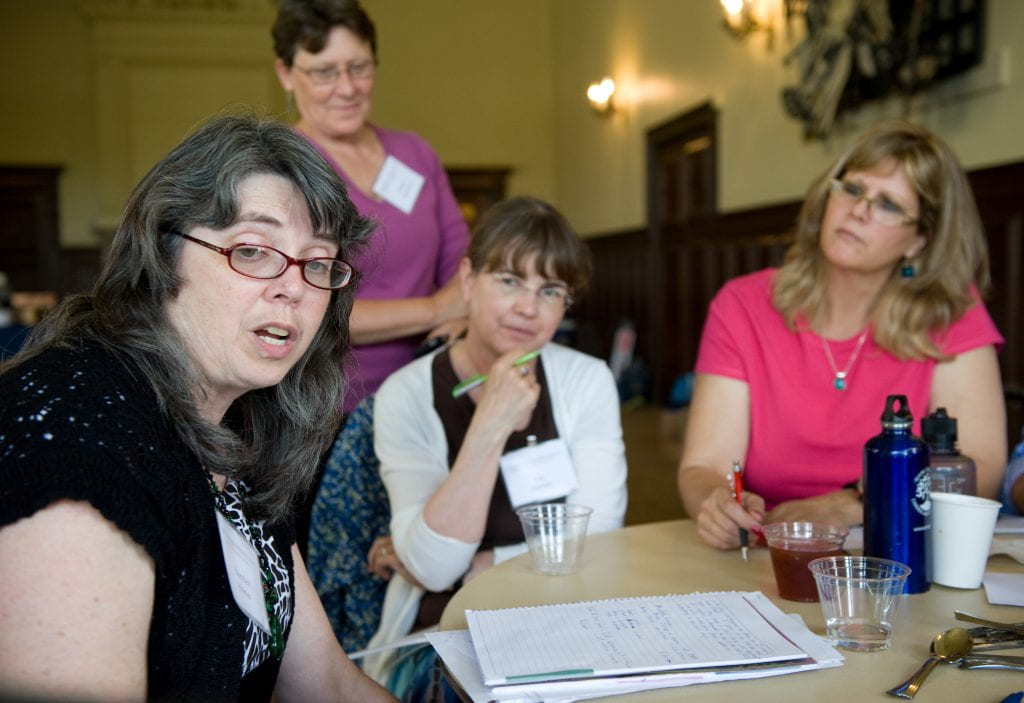
Photo by Sid Hastings.
The majority of teachers are graduates of WUSTL’s Life Sciences for a Global Community (LSGC) master’s program and are Noyce teacher leadership fellows. The LSGC projects, funded by the National Science Foundation, are grounded in leadership from their inception, according to Barbara Schaal, PhD, the Mary-Dell Chilton Distinguished Professor in biology in Arts & Sciences, and principal investigator on the NSF project.
“In this program, we didn’t define the projects for the teachers. We asked teachers to define what their leadership project would look like,” said Phyllis Balcerzak, PhD, director of professional development for Institute for School Partnership.
The leadership component helps educators become active leaders without sacrificing their teaching roles.
“Typically, there is no way for teachers to advance and remain in the classroom,” Balcerzak said.
“They either become administrators or leave the profession.”
Diversity Boosts Learning for All Students
With early-morning enthusiasm fueled by pastries, fruit and plenty of coffee, the teachers kicked off the Saturday start of the conference with a presentation on “Differentiated Instruction.”
Science instructors Kelly Shipley, from McMinnville, Ore. and Valerie Smallbeck of Bismarck, N.D., presented a project conceived six years ago during their first summer on campus for the LSGC master’s program. Informed by their diversity of students — Shipley’s have learning and other disabilities, Smallbeck’s are advanced, and their Austin, TX. partner’s are deaf — the trio is putting finishes touches on a project benefitting all learners.
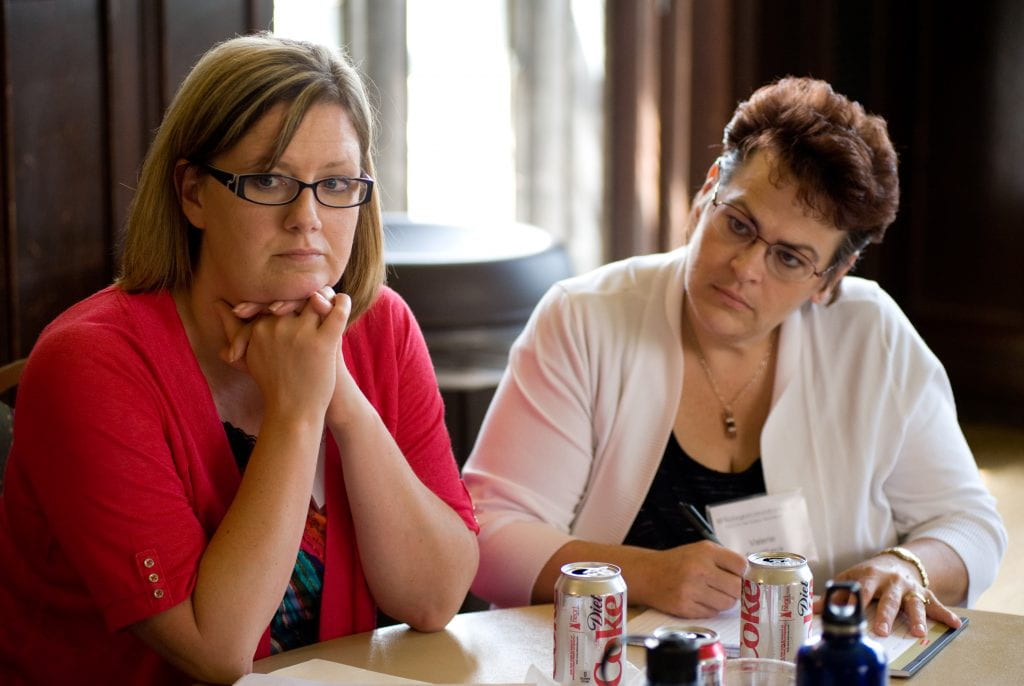
Photo by Sid Hastings.
Each unit considers the needs of all learners. To that end, the lesson plans simultaneously address the entire spectrum of learning styles, offer adapted activities, or both.
In the living laboratories of their project — classrooms — the teachers discovered that the very adaptations that best serve students with disabilities make learning more interesting for advanced students.
Some activities include gifted learners helping those with learning disabilities.
“It reinforces the learning for the AP kids,” Smallbeck told the group.
The teachers’ camaraderie, forged through emailing, Skype-ing and weekends spent huddled in hotel rooms, was evident during their presentation. In a Power Point visual, Smallbeck and Shipley ribbed their Texas teammate by making her much larger state the same size as Oregon and North Dakota.
“But Texas is bolded,” Shipley quipped.
Case Studies Bring Science to Life
Regardless of students’ learning abilities, capturing their attention is a master key to active engagement. Few techniques rival riveting students to the material better than case studies: it’s much more interesting to learn how 10-year-old Johnny came down with sickle cell anemia than to memorize the genetic possibilities of his inheriting the disease.
Next on the ISP conference agenda was the “Case Studies” project presented by Jeff Marlow, from Rutherford County, Tenn.; Emily Sherman of Scarborough County, Maine; David Campbell, from Olympia Wash.; and Robin Cochran-Dirksen from the Lead-Deadwood, S.D. district.
Together, these educators have pooled and synthesized dozens of case studies to create enough teaching materials for an entire year.
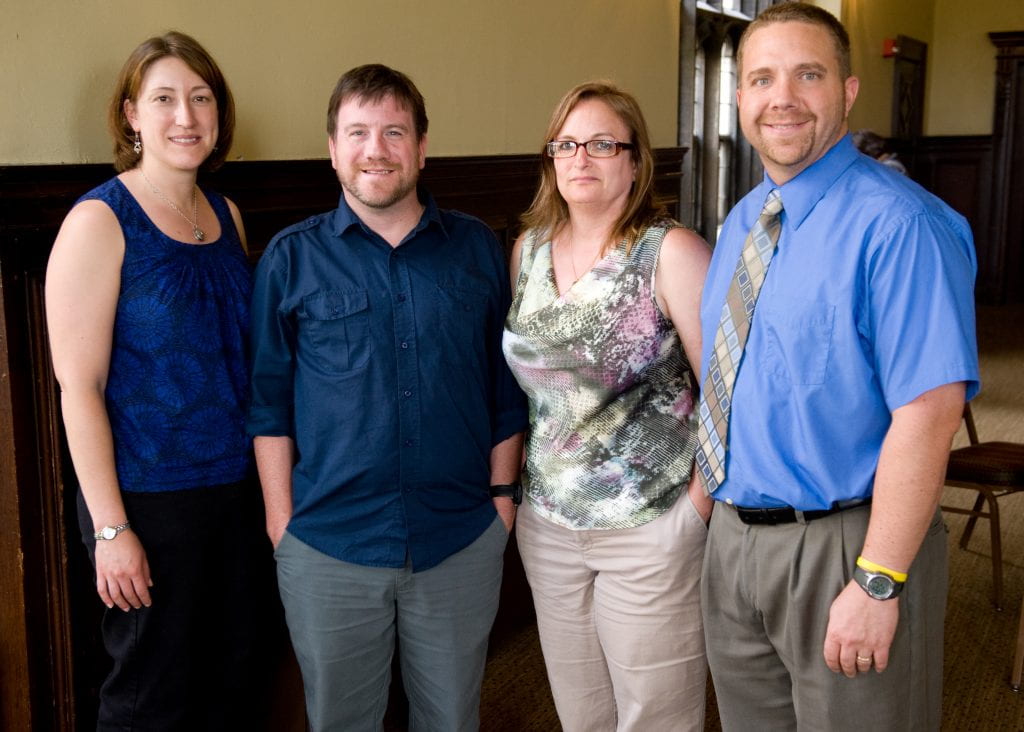
Photo by Sid Hastings.
“A case study is a vehicle by which a chunk of reality is brought to classroom,” Dirksen said.
An important component of the project — of all the projects — is meeting national standards so that teachers in every state can justify using the materials. To that end, the “Case Studies” team is folding multiple standards into each case.
Ultimately, teachers should be able to search the “Case Studies” database for lessons that meet any specific national criteria.
“In the end, the case study database will be an extremely powerful and efficient resource for teachers all across the country,” Marlow said. “Case studies can raise the level of excitement in the classroom while at the same time keeping to the required standards.”
Like many of the other projects, “Case Studies” highlighted the benefit of teachers interacting with educators from different states to discover fresh methods of meeting national standards, according to Balcerzak.
“It’s very valuable, for example, for teachers from Oklahoma to talk to teachers from Missouri and Washington State, to find there are similarities in the ways teachers are implementing national standards, and there are differences.”
Hands-on Activities: Keeping It Real
Learning through the manipulation of living organisms is an invaluable process for science teachers. The availability and complexity of the tiny, planktonic crustacean Daphnia make it an ideal subject, as educators learned in a post-lunch roundtable discussion of “Daphnia as a Model Organism.”
“Daphnia is the most commonly studied organism in environmental research, second only to fruit flies,” noted presenter MaryBeth Kramer, from McMinnville, Ore.
In discussions involving hand soap, salt and other test ingredients, Shipley immediately saw possibilities: “You could put these things on a table and say, ‘Design your own lab,’” she offered.
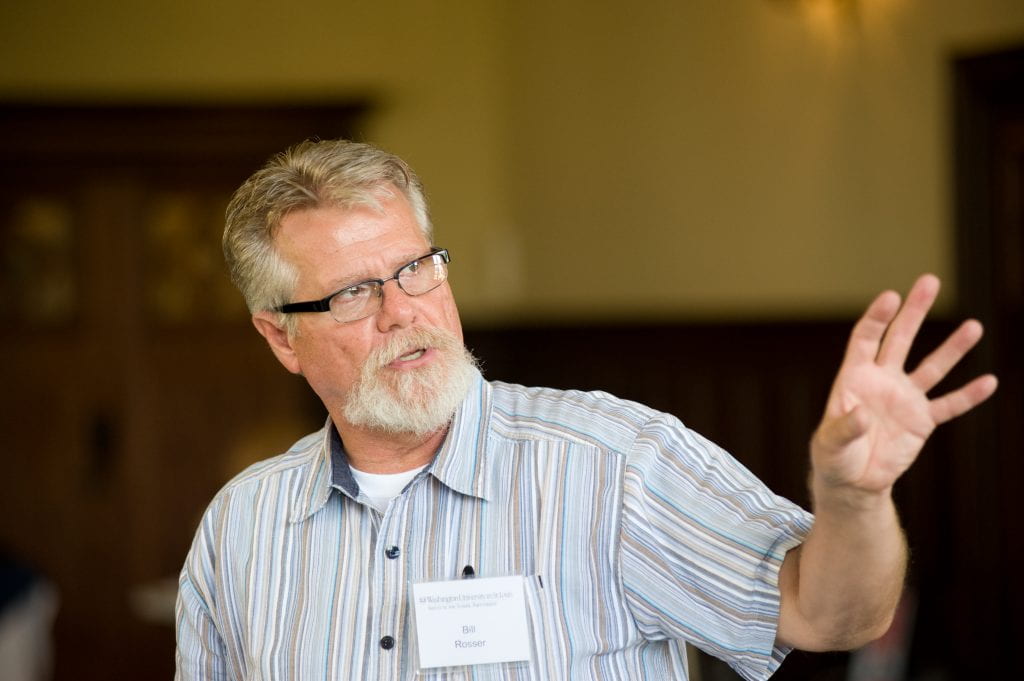
Photo by Sid Hastings.
The afternoon’s roundtable also included discussion of another model organism for scientific study: Arabidopsis thaliana. The “Arabidopsis: 6th Generation” project, presented by Bill Rosser of Fayetteville, Ark. expounds upon the work of Schaal and her research lab.
Arabidopsis is a small, flowering plant whose changes can be clearly observed. Rosser explained how some of the saved-and-propagated seeds made it to the sixth generation to demonstrate genetic diversity and differentiation within and among populations.
A third topic explored in the roundtables concerned “The Clover Project: A Study in Adaptive Polymorphism.” Presented by Chuck McWilliams, a Maplewood Richmond Heights High School biology teacher, in conjunction with WUSTL Associate Professor of Biology Ken Olsen, PhD, the project’s labs investigate cyanide production in white clover.
An important goal of “The Clover Project” is providing students with the opportunity to do real-world research. Through the project’s website, students all over the country can participate in data collection and share their work with researchers in Olsen’s lab.
Technology in the Wild
On Sunday morning, following a night of animated dinner conversation at Pi pizzeria, the teachers’ group heard about a project whose focus is not found in nature but is a boon to studying it: the iPad and similar devices.
“Teaching Using Tablet Technology,” presented by Travis Plume, biology teacher at Jefferson City, Mo.; Cora James, biology and astronomy teacher from Haskell, Ok.; and Kay Gamble, biology and anatomy and physiology, in Ada, Ok.; generated more discussion than any other project.
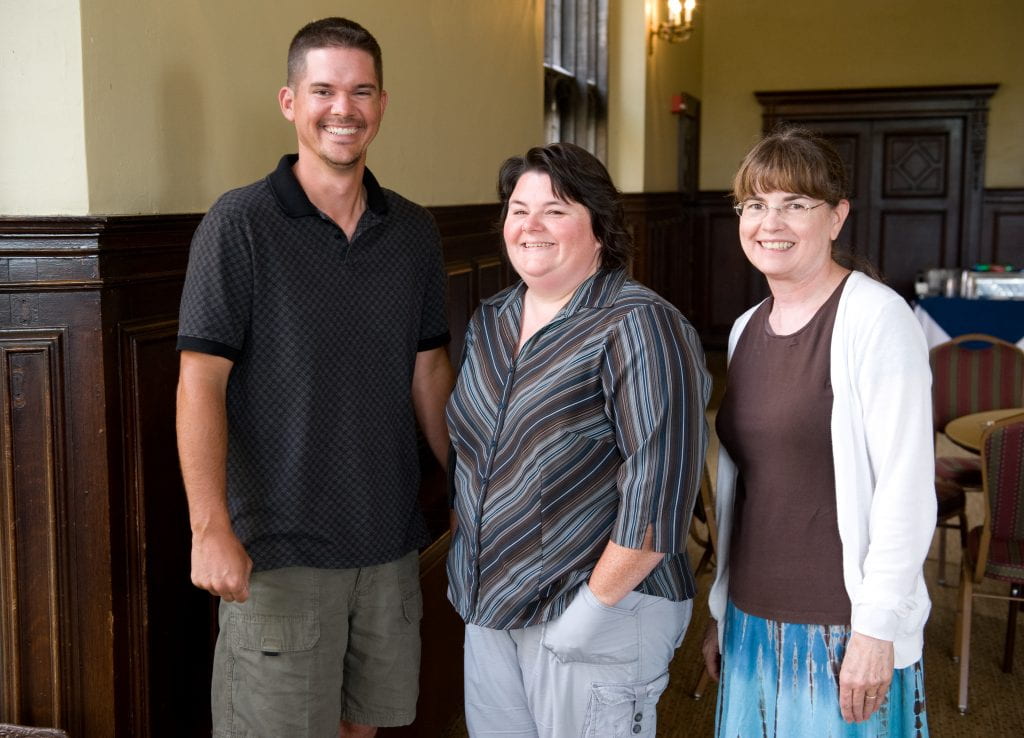
Photo by Sid Hastings.
“Tablet Technology” researchers emphasized the value of students using technology during interactions with the environment and with their peers, on a local, national and international scale. For example, using internet forms, students can share their water-monitoring data with schools all over the planet.
“The science world is fully globalized. Students have to be aware of how to act on a global scale,” James said.
It’s a project whose elements area already embraced by today’s tech-savvy students.
“Let’s don’t fight it; let’s meet the students where they are,” Plume offered.
“I’ve actually had a couple of students sign of for AP biology because they wanted to mess with the tablets,” James reported.
That kind of excitement is the goal of all ISP projects and their teacher-leaders.
Summing up the conference atmosphere, “Case Studies” researcher Jeff Marlow harked back to an beloved experience familiar to every schoolchild.
“It felt like ‘show and tell,’” Marlow said. “Each of us has things we were passionate about, and it was a chance to share that with our colleagues who are all just as motivated as we are to make a real difference in our schools.”
— Nancy Fowler